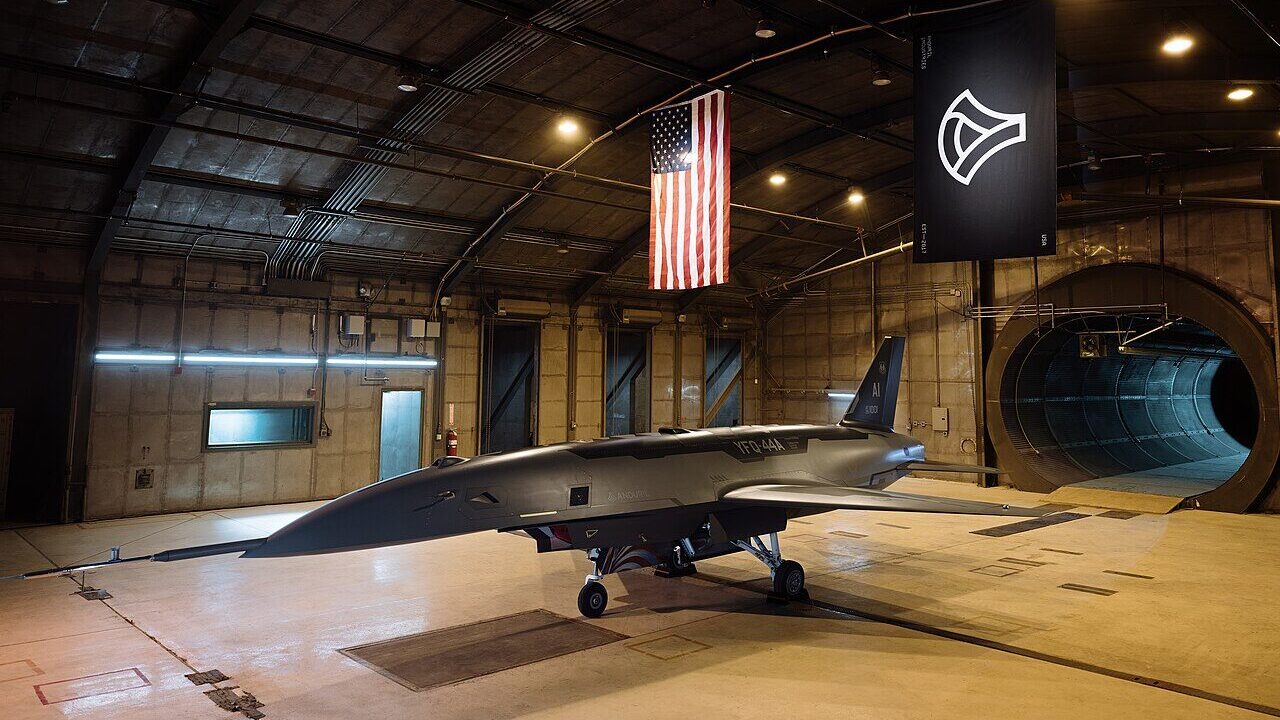
The US Air Force’s New Drones Are a Game Changer
The Collaborative Combat Aircraft program marks the next step in the evolution of airpower, signaling the beginning of the end for manned fighter platforms.
The US Air Force’s forthcoming Collaborative Combat Aircraft (CCA) program is designed to serve as an autonomous drone wingman to the sixth-generation F-47 NGAD, marking the beginning of a new era in airpower, where automated and manned aircraft work in synchronization.
The CCA drones, which are designated as fighter aircraft, are being built to provide combat capability at a mere fraction of the cost of standard, manned fighter jets. The CCAs will be built with an emphasis on survivability, autonomy, and adaptability, with the Air Force planning to procure about 1,000 units, allowing for two CCAs to be paired with each manned fighter.
The result, in theory, will be scalable force multiplication while controlling costs and reducing risk exposure for human pilots. While the CCA is ostensibly a pairing between manned and autonomous platforms, the program is undoubtedly the next step in a shift away from manned fighters toward autonomous or unmanned fighters. If the CCA program goes well, expect the fighter developed after the F-47 to be completely unmanned.
The CCA Program Will Feature Two Drones
The CCA program will feature two distinct platforms: the General Dynamics YFQ-42A and the Anduril Industries YFQ-44A. In March 2025, the Air Force designated both CCA platforms as a “fighter,” the first time any drone has received the fighter designation. The symbolism is clear, marking a doctrinal shift towards the use of drone aircraft.
The YFQ-42A is derived from the XQ-67A demonstrator, which first flew in early 2024. The YFQ-44A is derived from Anduril’s Fury drone. Both drones are part of the Air Force’s Increment 1 effort, which focuses on air-to-air missions and integration with manned fighters, such as the F-35 Lightning II and F-47 NGAD.
Ground testing for both CCA platforms commenced in May 2025. First flights are expected in late summer. The Air Force is expected to make a final production decision by the end of fiscal year 2026. Operational fielding of the CCAs could begin as early as the late 2020s.
What Are the Capabilities of the Drone?
Each CCA was engineered to maximize stealth and long range, with combat radii over 700 nautical miles. Each is expected to carry a payload of air-to-air missiles, such as the AIM-120 AMRAAM, and will rely on networked autonomy.
The drones are expected to cost between $25 and $30 million per unit, which is significantly cheaper than modern manned fighters, such as the F-35, which costs upwards of $80 million per unit, or the F-47, which is expected to cost multiple hundreds of millions of dollars per unit. Further reducing the costs of the program, the Air Force plans to keep the CCAs in “fly-ready” storage, flying them only occasionally, to ensure readiness without the expense of daily sortie schedules.
In preparation for the CCA’s arrival, the Air Force has stood up a dedicated CCA Aircraft Readiness Unit at Beale Air Force Base in California (current home of the U-2 Dragon Lady and former home of the SR-71 Blackbird). Beale will manage the logistics, maintenance, and readiness posture of the CCA program once it joins the fleet.
The CCA program marks the next step in the evolution of airpower and likely signifies the beginning of the end for manned fighter platforms.
About the Author: Harrison Kass
Harrison Kass is a Senior Defense and National Security Writer at The National Interest. Kass is an attorney and former political candidate who joined the US Air Force as a pilot trainee before being medically discharged. He focuses on military strategy, aerospace, and global security affairs. He holds a JD from the University of Oregon and a master’s in Global Journalism and International Relations from NYU.
Image Credit: Wikimedia Commons/Master Sgt. Gustavo Castillo.
The post The US Air Force’s New Drones Are a Game Changer appeared first on The National Interest.

















